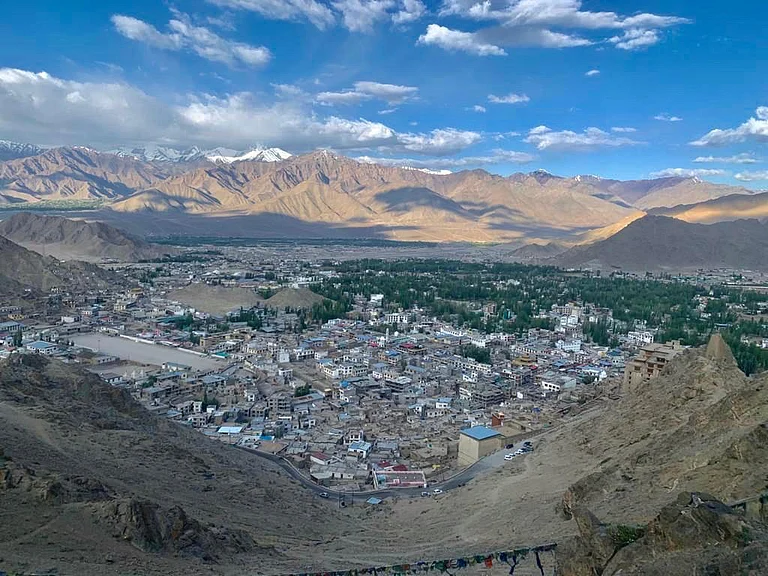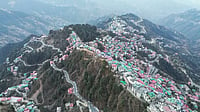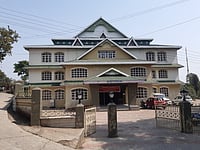Last year, between July 9 and 11, the Kullu Valley in the North Western Himalayas, became an epicentre to torrential rains causing unprecedented flash floods in glacier-fed Beas river, landslides, house collapses and heavy fatalities—the worst calamity in ecologically fragile mountain region. More than 500 deaths were reported, 2,546 houses and 317 shops completely damaged. The government estimated a loss of Rs 10,000 crores.
An extreme weather event as most environmental experts described it, continues to remind the people about the after-effects of building mega hydro-projects, tunnels, dams, four-lane projects-debris dumped in the rivers and hill slopes and unplanned constructions inappropriately encroaching river banks.
Two mountain states of Himachal Pradesh and Uttarakhand are increasingly seeing an increased threat to the environment due to shifts in the weather patterns , construction of hydro-power projects, dams disrupting the river ecosystem and cutting of hills.
Some of the worst geo-ecological disasters whether in Himachal Pradesh or Uttarkahand were the Silkayara tunnel collapse in Uttarkashi, where 41 labourers remained trapped inside for 17 days, Kedarnath floods in 2013 and Chamoli disaster in 2021 never became part of the parties agenda in the elections.
Himachal Pradesh goes to polls on June 1 in the last phase of the polling.
Just ahead of this, the horrifying story of massive destruction and devastation at village Multhan, 191 km from Shimla on May 10, has caused huge losses, both economic and environmental even as affected families continue to wonder how secure their places of habitation are, with hydro-power projects coming up in the close vicinity.
The 25 MW hydropower project, executed at Lambadug, where penstock/tunnel failure caused water leakage turning it into a flash flood devastated property, agricultural land and markets at Multhan village in Chhota Bhangal (Barot) region of Kangra. The promoters of the company --M/s Megha Engineering Infrastructure Limited (MEIL), is also one of the largest donors of electoral bonds.
Dr Pankaj Kotwal, 45, a practicing medical professional, whose house got completely wrecked by deluge entering the residential areas, says the family got completely traumatised by the incident. The gushing water bringing an entire load of mock, stones and mud, has filled his house. All household articles, beds, dining, electronic goods, refrigerator and kitchen have got damaged, and now almost irretrievable.
“It was around 8.35 am on May 10, when my 10-year old saw a stream of water coming towards our house from adjoining fields. It was a bright sunny morning. No rains and no weather forecast yet a flash-flood?. This was what looked traumatic ” he recalls.
Within the next one and half hour the entire town got flooded with water. It wasn’t actually gushing currents of water alone but a mud-slide hitting more than 48 shops, business establishments and houses forcing the people to take shelter leaving their houses. The panic spread to the area and people raised an alarm --- “Bachao, Bachao”. All nearby fields, cash crops over 6 acres of farming land of locals were damaged. The areas got flooded with stone boulders and debris.
A report compiled by Himdhara Environment Research and Action Collective attributed the entire disaster to management of Megha Engineering Infrastructure Limited (MEIL) at Lambadug--whose negligence has caused the tragedy. The 25 MW project, which was commissioned two years back, and could not be made operational due to some technical issues, was recently made operational.
Admits Hrikesh Meena, Director , department of Energy said, "We have sent a technical team to inquire into the incident. The project could not be made operational because there were some issues with its design etc. They only made it operation some days back”.
As per the local people, the project tunnel had suffered leakages about a year ago but faced no punitive action. They had also complained of difficulties in getting compensation from the government. The Project Company to be made accountable for their damages. A FIR has also been lodged against the company for its negligence.The villagers have submitted a memorandum to the Chief Minister Sukhwinder Singh Sukhu asking for ensuring accountability of the company,and also measures to prevent such disasters in the future places having hydel projects.
Manshi Asher, an environmental justice activist and researcher says "Multhan disaster is not a one off event .We have seen such seepages and leakages in many other projects as well. These can be attributed to faulty siting, poor planning, absence of disaster risk assessments and safety negligence.There is consistent opposition to the hydel projects in the state, especially Lahaul-Spiti and Kinnaur , most ecologically fragile regions facing severe degradations of environment and biosources .
The hydro-project poses a grave threat to the environment across the Himalayan states. The project has been facing public opposition for causing environmental damages.Yet, the hydropower dams are still being constructed at a rapid pace and are causing severe impact on the river ecology, glaciers, forests, biodiversity and displacements.
In Kinnaur, for example, the locals have refused to allow any new hydel project to be sanctioned in the high altitude tribal district, which has suffered massive environmental degradations, increased landslides and drying-up of the water sources, apart from change in the weather cycle, rising temperature.
“No means no” is the slogan ,which the activists have given and floated a social media campaign to save Kinnaur and Lahaul-Spiti being subjected to ecological crisis and loss of biodiversity. Thousands of trees including Chilgoza (one of the rare trees) have got chopped off for hydel projects. During 2022 elections, the activists made the candidates take a pledge not to allow hydel projects anymore.
At a special gram sabha called by the Moorang gram panchayat in Himachal Pradesh last year, its members refused to give their consent to a proposed 804-megawatt hydro-electric project in their area.
The 1000 MW Jangi Thopan Powari Hydroelectric Power (JTP HEP) project near Moorang on Satluj river, is one of the projects being vehemently opposed.
Kinnaur has been facing massive landslides and disruptions. Several people have died in the landslides during the past three years.A landslide in Lahaul-Spiti also blocked Chandra-Bhaga river.
In Uttarakhand, besides hydel projects and big dams, having made the state and its population highly vulnerable to disasters, landslides and land subsistence (Joshimath case) .The new threat posed to the state is now the Char-dham infrastructure project.
The incident at Silkyara tunnel, on under-construction 'Chardham Mahamarg Pariyojana'-- PM Narendra Modi's dream project, was also ecological disaster and exposed risk and safety of tunnels because of the mountain geology of Himalayas.The earlier tragedies of Kedarnath and Chamoli are few recent ones to raise serious concerns.
Says Anoop Nautiyal, an environmentalist and social activist at Dehradun “Tunnel construction can lead to habitat fragmentation, disturbance of wildlife, and alteration of water flow, affecting ecosystems. Soil erosion and potential landslides are also concerns”Dehradun-based environmental action and advocacy group, Social Development for Communities (SDC) Foundation, which he heads, has released its 19th monthly disaster, extreme weather events and accident report in April 2024.
The Uttarakhand Disaster and Accident Analysis Initiative (UDAAI) in its April 2024 report has included ISRO's revelations about the spread of hundreds of glacial lakes in the Himalayas. According to the report, incidents like glacial lake explosions and resulting glacial lake outburst floods have become common in the Himalayas. This poses a severe danger.
Long-term satellite imagery covering the Himalayas revealed that out of 2,431 glacial lakes larger than 10 hectares in area identified in 2016/2017, 676 glacial lakes have expanded significantly since 1984. The Indian Space Research Organization (ISRO) said that of these 676 lakes , 130 are within India, of which 65, seven, and 58 lakes are located in the Indus, Ganges, and Brahmaputra river basins, respectively.
Nautiyal emphasized the urgent need to strengthen Uttarakhand's weak disaster management system and climate action frameworks. He expressed hope that the monthly documentation of the Uttarakhand UDAAI monthly reports could be helpful for the state's policymakers and other stakeholders.
"Rushing construction projects without adequate safety measures can have disastrous consequences. The focus should be on ensuring minimal damage to the environment, mountain ecology, rehabilitation of displaced families, livelihood protection, stopping environmental degradations and afforestion measures," said Suman Vikrant, a retired engineer-in-Chief in Shimla.





























